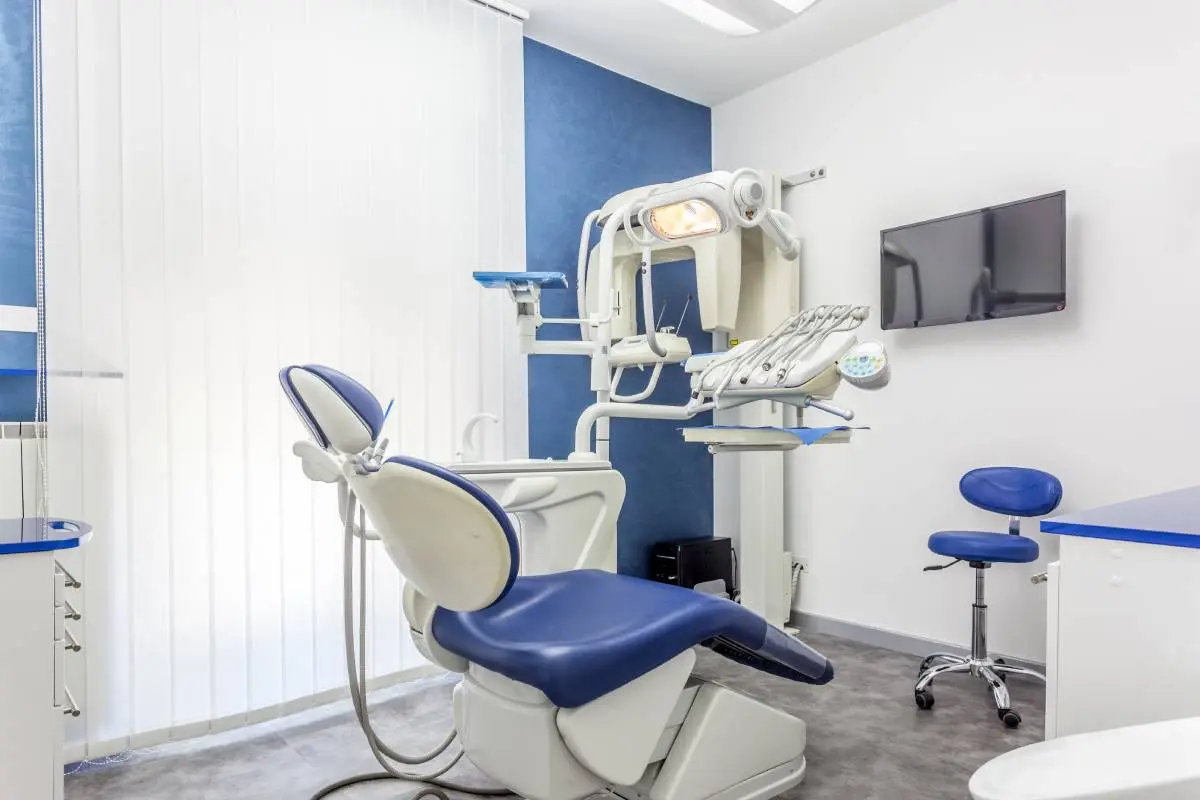Pursuing a career in dentistry involves a significant financial and time commitment that may leave you wondering if it’s even worth it in the long run. While dentistry generally offers high earning potential, the average debt of graduating dental students is similarly high, at $312,700 for the Class of 2023, according to the American Dental Education Association (ADEA). So, before you take out that loan, you need to ask the important questions: How much does a dentist make? And is it enough to repay your debt?

In any case, whether you’re considering dental school or you’re an experienced dentist looking to boost your earnings, understanding the factors that influence dentist income will help you set realistic career expectations and determine if the returns are truly worth the investment.
What’s the Average Dentist Salary?
The latest data from the U.S. Bureau of Labor Statistics (BLS) as of May 2023 revealed that the average dentist’s salary in the U.S. is $170,910. By implication, the average dentist’s hourly pay is $82.17. On the other hand, according to the American Dental Association (ADA), the average annual salary of general practitioner dentists in private practice was $218,710 in 2023.
Clearly, assessing the average dentist salary is a little complicated because it varies depending on key factors like location, specialization, years of experience, and practice ownership. Also, because dental compensation models can be complex, dentists may not always receive a straight salary, and pay could be commission-based.
Some dentists may earn less, while others end up smiling all the way to the bank with three to five times the average dentist’s income. For context, according to the BLS, the lowest-paid 10% of dentists in general practice earned $80,820 annually, while the highest-paid 10% earned more than $239,200 annually.
Key Factors Influencing a Dentist’s Salary
As mentioned earlier, several factors influence how much dentists get paid. By understanding these factors, aspiring and practicing dentists can strategically maximize their earning potential. These factors include:
- Geographic Location: Dentists in more urban states generally earn higher salaries due to greater demand and a higher cost of living. For instance, dentists’ pay in Maryland and Texas averages significantly higher than in more rural states like Mississippi and Utah, where salaries are among the lowest. Conversely, because some rural or low-income areas like Vermont have less competition and offer incentives to attract dentists, earning potential could be higher.
- Specialization: Specializing in in-demand fields like orthodontics, prosthodontics, or oral and maxillofacial surgery can dramatically increase income compared to practicing general dentistry. While these roles require additional training and expertise, they are highly valued in the dental industry.
- Experience: Experienced dentists typically earn more than beginners because they have honed their clinical skills and accumulated knowledge over years of practice. They can also take on complex procedures that budding dentists may struggle with. Also, seasoned professionals typically know how to deal with anxious dental patients, which attracts more patients and increases their income.
- Practice Ownership: Owning a private dental practice greatly increases income potential compared to working as a dental associate. While employees don’t have to concern themselves with business overhead costs and dental marketing, practice owners have autonomy over their fees and can build equity in their business.
Dentist Salaries by State
Location is an essential factor to consider when determining how much dentists make. From the BLS statistics provided below, it can be deduced that urban states generally pay dentists a higher salary than rural states. On the bright side, dentists in rural areas may benefit from reduced competition and government incentives.
Here’s a breakdown of the states with the highest and lowest paid dentist salaries according to BLS May 2023 State Occupational Employment and Wage Estimates.
Highest Paid Dental Salaries by State
| State | Employment | Hourly Mean Wage | Annual Mean Wage |
| Vermont | 250 | $125.18 | $260,380 |
| Maryland | 2,970 | $112.82 | $234,670 |
| Arizona | 2,140 | $111.49 | $231,890 |
| Delaware | 350 | $109.23 | $227,200 |
| Texas | 10,910 | $105.77 | $220,000 |
Maryland, Arizona, Delaware, and Texas are generally urban states with higher living costs and more demand. Reasonably, dentists who are localized in these areas enjoy higher incomes. In addition, although states like California, Florida, and Texas have the highest number of employed dentists, dentist pay is unaffected by the increased competition and remains relatively high. For example, the average salary of a dentist in California is $181,720 despite having 18,820 employed dentists—the highest across all states.
Surprisingly, while Vermont is considered a rural state, it is the highest-paying state for dentists in the U.S. This is largely because Vermont has a shortage of dental practitioners and an increasing need for accessible dental care, especially for children and low-income and disabled adults. In a bid to encourage dentists to accept patients with the federally supported, state-administered Medicaid insurance program, VTDigger reports that Vermont has increased Medicaid payments to dentists.
Lowest Paid Dental Salary by State
| State | Employment | Hourly Mean Wage | Annual Mean Wage |
| Mississippi | 720 | $62.76 | $130,550 |
| Utah | 1,570 | $67.29 | $139,970 |
| South Dakota | 280 | $68.67 | $142,830 |
| Nevada | 850 | $69.43 | $144,420 |
| Colorado | 3,000 | $72.03 | $149,810 |
Mississippi, Utah, and South Dakota are the top three states with the lowest average dentist salaries. These states are generally considered rural and have low population density, cost of living, and economic development. As such, dentist salaries are adjusted to fit the cost of living, making them relatively low.
However, according to data from ADA Practice Transitions (ADAPT) participants, dental practices in rural areas are typically very lucrative because overhead costs are lower, ranging as low as 50% compared to 75 or 80% in urban areas. In addition, less competition in rural areas allows dentists to negotiate favorable insurance reimbursement rates.
Dentist Salaries by Specialization
Specialization is another essential factor that impacts dentist income. So, how much does a dentist make when they specialize? Dental specialists have more expertise and training in high-value aspects of dentistry, allowing them to increase their earning potential significantly. Top-earning areas of dental specialization include oral and maxillofacial surgery, orthodontics, and prosthodontics.
Here’s how much these specialists make annually on average and how it compares to the average salary for general dentists according to the BLS Occupational Employment and Wage Statistics (OEWS) for Dentists.
| Specialization | Employment | Hourly Mean Wage | Annual Mean Wage |
| Oral and Maxillofacial Surgery | 3,540 | $168.90 | $351,320 |
| Orthodontics | 6,180 | $118.72 | $246,950 |
| Prosthodontics | 520 | $117.10 | $243,560 |
| General Dentistry | 109,280 | $93.46 | $194,400 |
| All Other Specialists | 3,240 | $133.88 | $278,470 |
Oral and maxillofacial surgeons receive the highest pay among dental professionals because they require the most advanced training, which encompasses both dental and medical expertise. Compared to general dentists who perform routine checkups, extract teeth, and place implants, oral and maxillofacial surgeons perform highly technical and complex surgical procedures on the face and jaw, which are often in high demand. This includes treating conditions like facial trauma, cleft palate, and oral cancers.
Moreover, according to the Journal of Oral and Maxillofacial Surgery, oral and maxillofacial surgeons can further specialize in head and neck oncology, microvascular surgery, or craniofacial deformities, increasing their earning potential even more.
Dental Practice Owner Salary
Owning a dental practice is one of the most lucrative paths in dentistry, depending on the type of dentistry, location, clientele, and operational efficiency. The ADA’s 2024 Survey of Dental Practice report divulged that general practitioners who own a private practice earn an average of $228,220 per year, while specialists with a private practice earn an average of $385,610 annually. By combining dental expertise with entrepreneurial proficiency, dentists interested in owning a practice can either buy an existing practice or start their dental practice from scratch.

If you’re considering owning a dental practice for the increased income, note that it also comes with additional responsibilities and costs. It is essential to factor in business expenses like staff salaries, taxes, facility maintenance, and equipment costs, which can impact your overall income. Also, if you’re starting your practice from scratch, you won’t have access to a developed client base, so you’ll need to invest in marketing efforts to attract new patients.
Remember that successful dental practice owners not only earn income from business dividends but also build equity that they can sell for a profit later.
Strategies for Increasing Your Salary
If you’re wondering how much money dentists make because you want to maximize your earnings and build a thriving dental career, consider implementing these tested and proven strategies.
- Pursue Specialization: Invest in additional certifications, fellowships, or residencies in high-demand and well-paid fields like oral and maxillofacial surgery, orthodontics, or pediatric dentistry. Specializing in these fields boosts your credentials, making you more appealing to a broader patient base and bringing high financial rewards that make the investment worthwhile.
- Relocate to High-Demand Areas: Moving to an area with a shortage of dental professionals can significantly increase your income. Many of these underserved regions offer higher salaries, signing bonuses, and loan repayment programs to attract dentists. For instance, Vermont is the highest-paying state for dentists and has very low competition, with only 250 employed dentists.
- Enhance Marketing Efforts: If you own a dental practice, invest in digital marketing strategies to increase your business visibility and grow your client base, increasing revenue. You can exhibit your services and patient testimonials on a professional dental website optimized for search engines. In addition, engaging in social media campaigns with tools like Google Ads will take your marketing to the next level.
- Negotiate Contracts: If you’re a dental associate employed at a private practice, regularly review and negotiate your employment contract to fit your qualifications. Highlight your contributions, such as increased patient retention or revenue growth, to justify salary adjustments or bonuses.
- Invest in Patient Retention: Building strong and personalized relationships with your patients encourages loyalty and repeat visits, which translates to more money in the bank. Follow up with your patients personally, offer flexible scheduling, and provide impeccable customer service to ensure that you retain your patient base. In addition, providing convenient financing options to your patients will help to build trust and improve retention. For example, Finturf provides an easy point-of-sale (POS) in-house dental financing solution for your patients, allowing them to access healthcare and pay more conveniently.
Is a Dental Career Worth It?
According to the ADEA, the dental school program takes four years, excluding the additional four years of undergraduate training needed to qualify. Moreover, a report by the American Dental Association (ADA) revealed that the average cost of four years of dental school as of 2023-24 is $221,523 in public schools and $383,267 in private schools.
Given the high financial and time investments required to pursue a dental career, the grand question remains: how much does a dentist make, and will the salary make it all worthwhile in the long run?
Absolutely! Dentists earn high salaries and have multiple opportunities to increase them continually. You’ll be afforded the flexibility to work as an associate, specialize in high-demand fields, or own a thriving practice. Additionally, the ADA provides student loan repayment programs and resources to help you repay your loan in full.
Ultimately, dentistry can be an incredibly fulfilling career choice if you are passionate about dental healthcare and value high financial and professional rewards despite the challenges and educational costs.
FAQs
Do You Need a License to Be a Dentist?
Yes, you need a license to be a dentist in the United States. While the requirements for licensure vary by state, they generally involve completing an accredited dental program and passing licensure exams such as the Integrated National Board Dental Examination (INBDE) and regional clinical exams.
How Do You Start a Dental Practice?
To start a dental practice, you’ll need to obtain financing, secure a location with local zoning and building permits, purchase dental equipment and supplies, hire qualified staff, and create an effective marketing plan.
Which Cities Have the Lowest Dentist Salaries?
Cities in rural states like Utah, Mississippi, and South Dakota often have the lowest dentist salaries. This is due to low demand, smaller populations, and low cost of living. For instance, Logan in Utah has an average dentist salary of $126,090 per year, which is relatively low.
Which Cities Have the Highest Dentist Salaries?
Cities in urban states like New York, Connecticut, and Florida offer some of the highest dental salaries, reflecting high demand and high cost of living. For example, dentists in Bridgeport, Connecticut, earn an average of $265,890 yearly.


